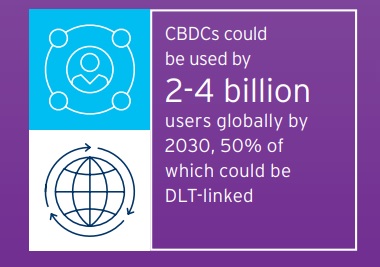Key highlights:
While some countries like China are advancing rapidly with digital yuan trials, the G7 prefers a measured approach and aims to establish guiding principles for CBDCs.
The group is also seeking to strengthen cryptocurrency regulation to prevent future financial turbulence, while not stifling innovation.
Analysts predict that CBDCs and the tokenization of assets will fuel the next wave of mass adoption of blockchain technology, with over $5 trillion in CBDCs circulating globally by the end of the decade.
Some big news is coming out of the G7 meeting this year, as the group of seven advanced economies is putting their heads together to help developing countries introduce central bank digital currencies (CBDCs). Japan’s top currency diplomat, Masato Kanda, says the goal is to ensure these CBDCs align with international standards to minimize risks.
Guiding Principles for Central Bank Digital Currencies
Some nations like China are advancing apace with digital yuan trials, while others prefer a slower, steadier pace. But the G7’s willingness to shape guiding principles suggests most see CBDCs as the future of finance. Though China sprinted ahead, the G7 prefers a measured approach.
The G7 is also looking to strengthen cryptocurrency regulation after the collapse of the FTX crypto exchange last year. They’re aiming for more oversight to prevent future financial turbulence. Though there are some differing opinions on the matter, the consensus among the G7 is clear: it’s time for stronger regulation.
While regulation has long been a dreaded notion, establishing prudent policy from esteemed representatives of the free world’s most prominent economies should assuage concerns of unchecked volatility and ensure sustainable mainstream adoption.
Forging a Cooperative Path Forward
Rather than stifle innovation, thoughtful regulation encourages stable progress by providing clear guidelines and consumer protections. As Web3 continues disrupting traditional systems, leaders must guide this revolution to benefit humanity. By addressing risks like those tragically exposed in FTX’s downfall, the G7 Summit signals hope for avoiding future catastrophes through pragmatic policymaking at an international level.
Japan’s finance minister insightfully recognizes both the promise and perils of emerging technologies, calling for governance to minimize destabilization.
The Japanese whitepaper embracing crypto and Web3 adoption suggests the G7 Summit may approach policy discussions with an open and progressive mindset, focusing on best practices for developing nations also exploring CBDCs. By establishing sound standards allowing for variations in implementation, the G7 can empower countries to tailor the policy to their unique needs while upholding shared principles of transparency and accountability.
Though Japan’s tight crypto oversight helped recover customer funds from FTX’s fall, international coordination is key. The FSB and IMF must propose global crypto standards by fall for the G-20.
Tackling Debt Risks and Ensuring Inclusive Growth
Moving on to another pressing issue, the G7 will also address the debt vulnerabilities of middle-income countries. While concrete results for countries like Zambia, Ghana, and Ethiopia may be tougher to achieve, there’s a glimmer of hope for Sri Lanka.
Convening in Washington this week, global leaders can build on this momentum. While ambitious results may prove elusive, concrete first steps will inspire hope.
So, as the world continues to embrace the digital age, the G7 is working to ensure developing countries aren’t left behind. They’re taking on challenges like CBDC adoption, cryptocurrency regulation, and tackling debt woes.

$5 Trillion in CBDCs and Widespread Adoption by 2030
On another note, analysts at the global investment bank Citi predict that the rise of CBDCs and tokenization of real-world assets will fuel the next wave of mass adoption of blockchain technology. They estimate that, by the end of the decade, we could see over $5 trillion in CBDCs circulating globally, giving almost 2 billion people the chance to experiment with digital currency.
Rather than impose unreasonable constraints, the G7 Summit presents an opportunity to forge a cooperative future where crypto and governments work together expanding access to financial tools benefitting all of humanity. With regulation comes legitimacy, and legitimacy catalyzes mainstream acceptance.
















